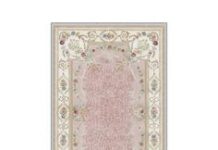Home organization ideas will become apparent as you broaden your thinking and problem solving skills. For instance, consider the task of organizing a pantry. If you think of what a pantry is, what it does, and how it is normally used, you can easily see the parallel between pantries and closets. Both pantries and closets store items in a closed protected environment, and are used on a daily or nearly daily basis. So couldn’t we likely apply some of our closet organization ideas and principles to this food closet we call a pantry? The answer is of course we can.
When you hear someone say that they are organizing their closet, usually visions of clothing piles come to mind. We get rid of the clothing piles by culling out the unused or unusable items, and organize what is left. Any left over space is exploited with shelving or containers, and we are left with a well organized easy to use space, With a pantry closet, a similar set of organization tools can be used.
First, seek out and cull any unused or unusable foods. Keep in mind that food items like dried goods in boxes have a shelf life, especially if opened. It should make sense then to keep your dry goods in an arrangement that allows for easy rotation as leftover foods go stale. Like unworn clothes, foods that were bought but never used should be culled at the same time as stale goods as well. Once you’ve completed this step with your dried goods, limit your purchases to more match what you use and you will reduce waste.
Factory sealed canned goods on the other hand have a much longer shelf life, and we can modify our efforts here. Because of their shelf life, canned goods often make up an emergency food supply. If you choose to have such a supply, stack these items toward the back of deep shelves, but keep the labels visible to avoid over-duplication or the rare but possible expiration of these items. Your frequently used items can take up the outer portion of your shelves, again using a grouping strategy with labels visible.
With both of these groups of stored foods, consider donating canned or boxed goods you know you will not eat, or consider handing them over to a neighbor or visiting family member or friend.
A third group of items considered in usual pantry items are paper goods such as paper plates and napkins, and paper towels. Kept in their own area of the pantry, it’s easy to see your stock level, and keep these products in store fresh condition. You’ll have far less chance of over-buying, and have less instances of dirty or dusty or missing paper goods when needed.
The fourth group that frequently gets stored in a pantry are items like onions, garlic, and other fresh items that do not require refrigeration. Consider aeration though, and you may wish to look at a couple hanging baskets for these goods. Air circulation will keep them usable longer, and you can quickly catch items ready to spoil.









































